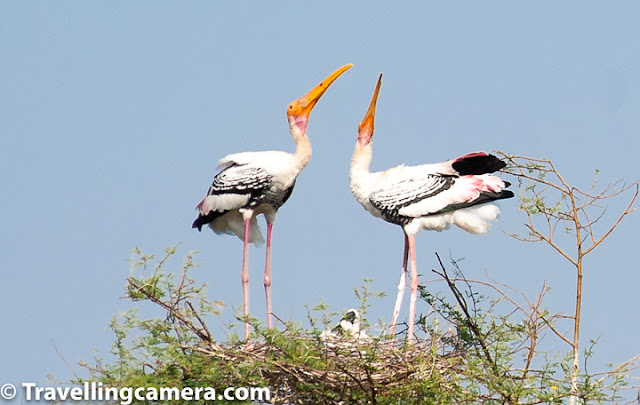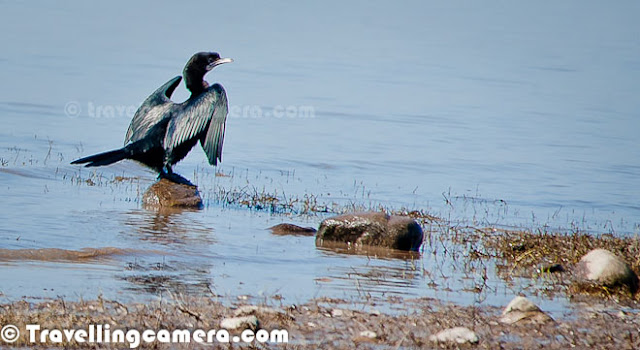In my previous post of this series, started talking about some of the good birding spots in and around Delhi. We have already spoken about Okhla Bird Sanctuary, Surajpur Bird Sanctuary, and Sultanpur Bird Sanctuary. This time we will head inside the city as well as explore some spots that are a few hours removed from Delhi, but still can be covered in a day or over a weekend.
Keoladeo National Park (Bharatpur Bird Sanctuary)
Bharatpur bird Sanctuary definitely is one of the best places to go birding near Delhi. To make your trip most effectice, plan for at least two days, else it would get too tiring. You would also see birds in your hotel or resort so make sure you set time aside to just relax and soak it all in.
Let's first see some distance approximations from nearby cities:
Delhi and Bharatpur – 190 km (National Capital of India)
Agra and Bharatpur – 50+ km (the place where taj Mahal is)
Mathura and Bharatpur – 30+ km (An important place for Hindus. There are lot fo temples in this town)
Jaipur and Bharatpur – 170+ km (Jaipur is capital city of Rajasthan state of India)
Luxury trains like Palace of Wheels also cover Bharatpur National Park and if you opt for such option, there is no need to read this post any further because they take care of everything. Nearby airports around Bharatpur are Delhi and Jaipur and there is a railway station in Bharatpur.
Broadly we can divide whole year into 3 seasons of North India - Winters (Oct-Mar), Summers (April-June), Monsoons (July-Sept).
Monsoon is worst season to visit Bharatpur National Park because of high bushes all around and if it's raining, birds would be under their identified shelters. So bird sightings are far less in rainy season.
Summer is a good time but you only find resident birds around and walking in summers of Rajasthan is a pretty big challenge but that can be easily resolved by hiring a cycle or cycle-rickshaw.
Winter becomes the best because of various reasons - migratory birds visit the park so you see more than the resident birds of Bharatpur. Even though, resident birds in themselves are a treat to watch. Also walking around in winters is much better than any other season in Bharatpur. Apart from that winter light is just perfect for photography, especially Nov-feb months are pretty good.
Keoladeo National park has Indian Darter, Indian Sarus crane, heron, cormorants, storks, migrant ducks, common teal, gadwall, shoveler, knob-billed duck, Indian shag, white spoonbill, green sandpiper, common sandpiper, oriental ibis, babblers, bee-eaters, buntings, guails, warblers, osprey, short-toed eagle, greater spotted eagle, crested serpent eagle, sea eagle and lot more. On the whole there are 300+ which are hard to list. Also, Parrots of Bharatpur are very friendly and pose you very well. We attributed their friendliness to the fact that no one was really paying much attention to them.
Apart from birds one can also see Nilgai, chital deer, white sambar, Indian porcupine, small Indian mongoose, jungle cat, fishing ca etc. You certainly see cows inside the park. And we have also heard that Hyenas and Jackals can be seen inside the park, but we did not see these during our trip.
It is not rare to see snakes, turtles, lizards, frogs and other species near the water bodies of Bharatpur National Park, and especially in monsoons, which is probably worst season to visit Bharatpur. During summer, you will also see several species of butterflies.
Lodhi Gardens
While the boards at Lodhi Garden list a handful of bird species, I am sure there are more than those around. For example, I find it hard to believe that the omnipresent Brown-headed Barbets and Coppersmith Barbets haven't discovered this green haven yet. And I am pretty sure there are more than two species of starlings here - the board only mentions Common Mynah and Brahminy Starling.
The best thing about Lodhi Gardens is that it is bang in the middle of the city and yet once you are inside, you feel as if you are removed from the myriad city noises - traffic, industry etc. This is where you can find people doing what they like to do - in the morning there are various exercise groups, photographers, people who are playing Frisbee with there families. It is an improbable place in many regards. And then you are surrounded by tall, domed, medieval monuments and several decades-old trees.
So it isn't surprising that you also hear several bird sounds and then you spot them too. Just writing about this makes me want to go back to Lodhi Gardens, which I can't because of the lockdown.
The tamed geese in Lodhi Gardens are friendly enough when they feel like it, however, if they take a disliking to you, you will find them pecking on your feet to drive you away. Ducks are a little anti-social and prefer to hang out away from the human population.
Cormorants, Egrets, Parakeets, and Bee-eaters are a common sight and Koels and Papeehas are a common sound. If you are lucky you will also spot the Indian Grey Hornbill and one of the two city barbets. Apart from that you will also find butterflies and squirrels and various types of fish too.
Lodhi Garden is a nice place to visit if you want to photograph city birds. The best time to visit is the evenings and early mornings in summer and pretty much the entire day in winter.
Other spots that we are yet to check out
There are several other spots in Delhi that we have been planning to visit but haven't been able to get there yet. These are Yamuna Biodiversity Park, Sundar Nursery, and Sanjay Van. Of these I am sure that Yamuna Biodiversity Park would host several migratory birds during winter, and Sundar Nursery and Sanjay Van would be good places to spot smaller songbirds.
Actually, we are desperate for this lockdown to get over so that we can head out with our camera. While we are hearing birdsongs near our home now, but its been a while since we really saw any new birds. Anyway, as soon as we are past the Covid-19 pandemic, we'll be back in action and visit these birding havens.





















.jpg)
Comments